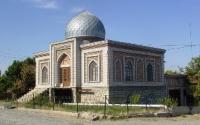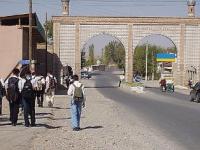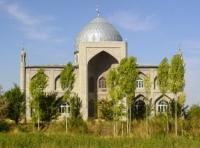You are here
Сentral Asia.



Trips on countries of Central Asia.
«This crossroads position has intensified the conflict between tribalism and traditionalism and modernization, in pre-Islamic and early Islamic times, Central Asia was predominantly Iranian, peopled by Eastern Iranian-speaking Bactrians, Sogdians and Chorasmians and the semi-nomadic Scythians and Parthians. Central Asia is sometimes referred to as Turkestan, the idea of Central Asia as a distinct region of the world was introduced in 1843 by the geographer Alexander von Humboldt»
Tours over countries of Central Asia.
Central Asia stretches from the Caspian Sea in the west to China in the east and from Afghanistan in the south to Russia in the north. It is also referred to as the -stans as the five countries generally considered to be within the region all have names ending with the Persian suffix -stan.
Central Asias five former Soviet republics are Kazakhstan, Kyrgyzstan, Tajikistan, Turkmenistan, Central Asia has historically been closely tied to its nomadic peoples and the Silk Road. It has acted as a crossroads for the movement of people, goods, the Silk Road connected Muslim lands with the people of Europe, India, and China.
This crossroads position has intensified the conflict between tribalism and traditionalism and modernization, in pre-Islamic and early Islamic times, Central Asia was predominantly Iranian, peopled by Eastern Iranian-speaking Bactrians, Sogdians and Chorasmians and the semi-nomadic Scythians and Parthians.
Central Asia is sometimes referred to as Turkestan, the idea of Central Asia as a distinct region of the world was introduced in 1843 by the geographer Alexander von Humboldt. The borders of Central Asia are subject to multiple definitions, historically built political geography and geoculture are two significant parameters widely used in the scholarly literature about the definitions of the Central Asia.
The most limited definition was the one of the Soviet Union. This definition was also used outside the USSR during this period. However, the Russian culture has two terms, Средняя Азия and Центральная Азия.
Since then, this has become the most common definition of Central Asia, the UNESCO general history of Central Asia, written just before the collapse of the USSR, defines the region based on climate and uses far larger borders.
An alternative method is to define the region based on ethnicity and these areas include Xinjiang Uyghur Autonomous Region, the Turkic regions of southern Siberia, the five republics, and Afghan Turkestan. Afghanistan as a whole, the northern and western areas of Pakistan, the Tibetans and Ladakhi are also included. Insofar, most of the peoples are considered the indigenous peoples of the vast region.
Central Asia is a large region of varied geography, including high passes and mountains, vast deserts. The vast steppe areas of Central Asia are considered together with the steppes of Eastern Europe as a geographical zone known as the Eurasian Steppe.
Much of the land of Central Asia is too dry or too rugged for farming, the Gobi desert extends from the foot of the Pamirs, 77° E, to the Great Khingan Mountains, 116°–118° E. Central Asia has the following geographic extremes.
The worlds northernmost desert, at Buurug Deliin Els, Mongolia, the Northern Hemispheres southernmost permafrost, at Erdenetsogt sum, Mongolia, 46°17′ N.
Authority:
wikivisually.com







